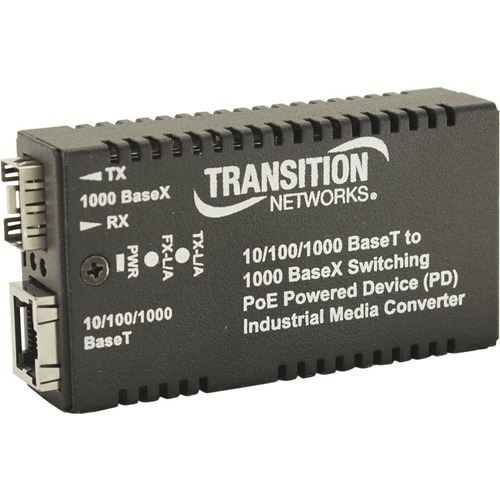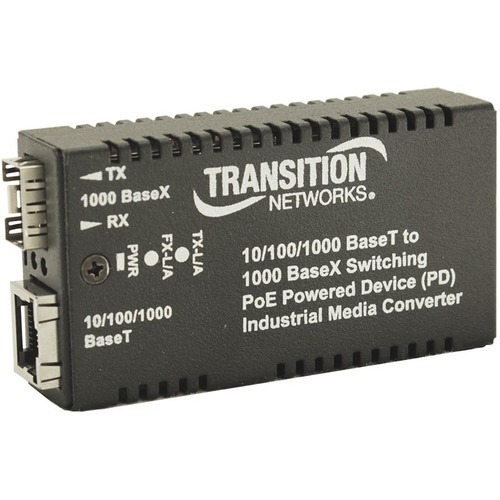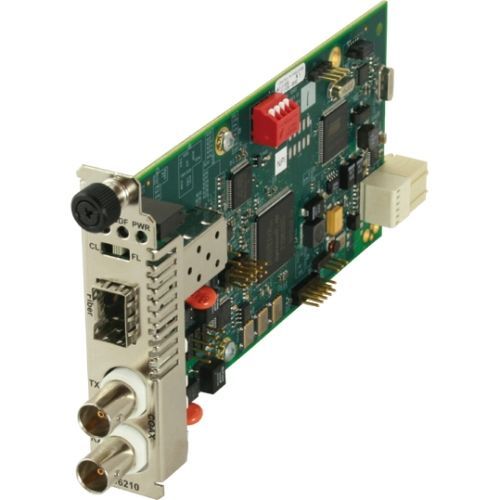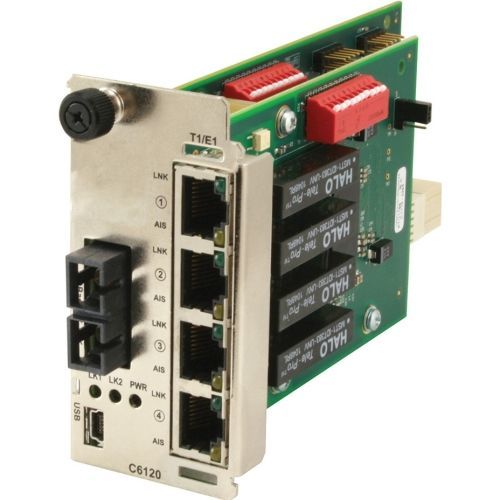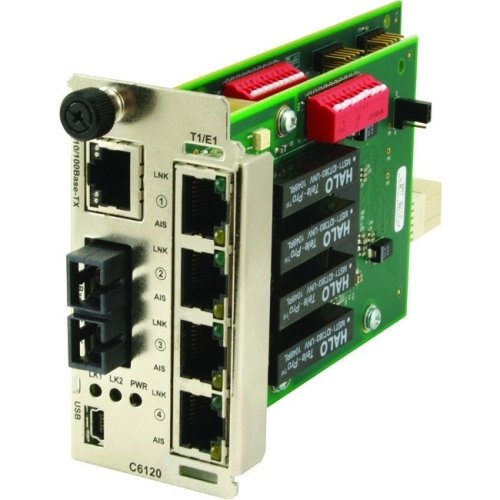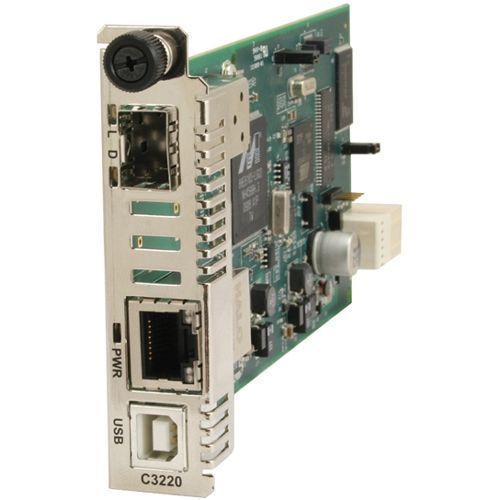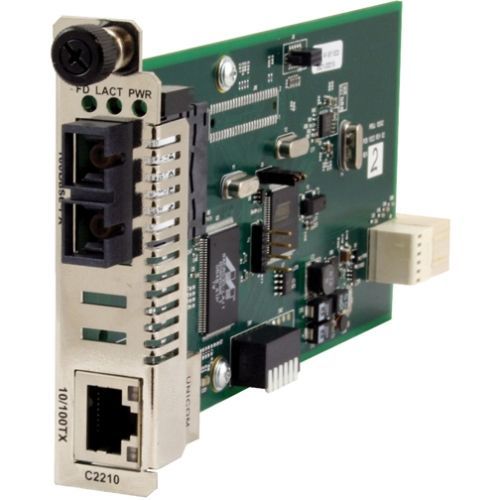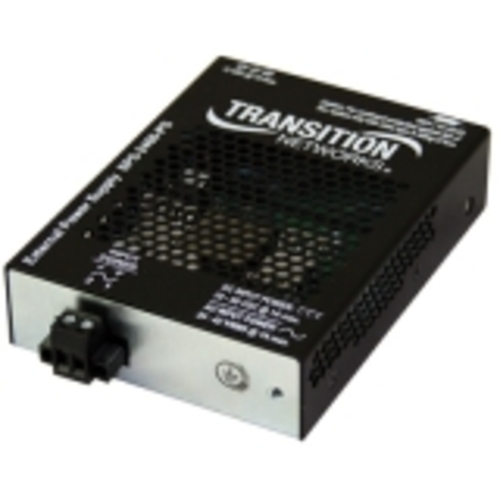Transition Networks M/GE-ISW-SFP-01-PD-UTX TRANSITION NETWORKS INC 10/100/1000BASETX TO 1000BASE SFP INDUSTRIAL UNIDIRECTIONAL TX
unidirectional Communication Is Often Used To Safeguard Information In Secure Environments Such As Government Agencies And Military Networks. A Unidirectional Device, Sometimes Referred To As A Unidirectional Security Gateway Or A Data Diode, Provides A Connection Between Two Or More Networks With Different Security Classifications And Helps To Protect Assets By Ensuring Information Is Directed Only To, Or From, The Appropriate Network As Designated By The Directional Device. Unidirectional Media Converters Combine This One-way Communications With The Benefits Of A Copper To Fiber Media Converter. Media Converters Are A Cost-effective, Plug-and-play Device That Allows Fiber Optic Cabling To Be Connected To Copper-based Networking Equipment. The Deployment Of Fiber Adds A Layer Of Security To Networks As It Is Difficult To Tap Into Fiber And Go Undetected. If Threats Are Attacking A Network, The Fiber Links Go Down And Network Administrators Are Made Aware Of The Problem, Providing Them The Opportunity To Address A Potential Breach Of Security.adding Unidirectional Technology To A Media Converter Creates A Physically Secure One-way Communication Channel Over Fiber Between A Secure Network And An Unsecure Network. These Devices Can Be Used To Allow Data From A Classified, High-security Area To Be Transmitted To A Low-security Area, While Preventing Unsecure Data From Re-entering The Classified Network. An Alternate Application Allows A Secure Network To Be Updated With Data From An External Source While Ensuring Its Critical Data Is Unable To Leave The Classified Area.
Transition Networks M/GE-ISW-SFP-01-PD-URX TRANSITION NETWORKS INC 10/100/1000BASETX TO 1000BASE SFP INDUSTRIAL UNIDIRECTIONAL RX
unidirectional Communication Is Often Used To Safeguard Information In Secure Environments Such As Government Agencies And Military Networks. A Unidirectional Device, Sometimes Referred To As A Unidirectional Security Gateway Or A Data Diode, Provides A Connection Between Two Or More Networks With Different Security Classifications And Helps To Protect Assets By Ensuring Information Is Directed Only To, Or From, The Appropriate Network As Designated By The Directional Device. Unidirectional Media Converters Combine This One-way Communications With The Benefits Of A Copper To Fiber Media Converter. Media Converters Are A Cost-effective, Plug-and-play Device That Allows Fiber Optic Cabling To Be Connected To Copper-based Networking Equipment. The Deployment Of Fiber Adds A Layer Of Security To Networks As It Is Difficult To Tap Into Fiber And Go Undetected. If Threats Are Attacking A Network, The Fiber Links Go Down And Network Administrators Are Made Aware Of The Problem, Providing Them The Opportunity To Address A Potential Breach Of Security.adding Unidirectional Technology To A Media Converter Creates A Physically Secure One-way Communication Channel Over Fiber Between A Secure Network And An Unsecure Network. These Devices Can Be Used To Allow Data From A Classified, High-security Area To Be Transmitted To A Low-security Area, While Preventing Unsecure Data From Re-entering The Classified Network. An Alternate Application Allows A Secure Network To Be Updated With Data From An External Source While Ensuring Its Critical Data Is Unable To Leave The Classified Area.
Transition Networks C6210-3040 TRANSITION NETWORKS INC MEDIA CONVERTER- DS3-T3/E3 COAX TO FIBER, SFP
the Ds3 - T3/e3 Copper To Fiber Network Interface Device (nid) Provides A Solution For Those Users That Need To Extend Ds3 Connections Over Fiber.the Ds3 - T3/e3s Supports Small Form Pluggable (sfp) Transceivers To Support A Variety Of Fiber Types, Distances And Wavelengths To Provide Maximum Flexibility Across A Variety Of Network Topologies. The Use Of Coarse Wave Division Multiplexing (cwdm) Sfps Can Be Utilized To Further Increase The Bandwidth Capacity Of The Fiber Infrastructure.the Ds3 - T3/e3 Nid Must Be Used In Pairs. A Typical Installation Will Include A Chassis Card Installed In The Ion Platform Locally And A Stand-alone Device Installed At The Remote Location.
Transition Networks C6210-3014 TRANSITION NETWORKS INC MEDIA CONVERTER- DS3-T3/ES COAX TO FIBER, SM SC, 20KM
the Ds3 - T3/e3 Copper To Fiber Network Interface Device (nid) Provides A Solution For Those Users That Need To Extend Ds3 Connections Over Fiber.the Ds3 - T3/e3s Supports Small Form Pluggable (sfp) Transceivers To Support A Variety Of Fiber Types, Distances And Wavelengths To Provide Maximum Flexibility Across A Variety Of Network Topologies. The Use Of Coarse Wave Division Multiplexing (cwdm) Sfps Can Be Utilized To Further Increase The Bandwidth Capacity Of The Fiber Infrastructure.the Ds3 - T3/e3 Nid Must Be Used In Pairs. A Typical Installation Will Include A Chassis Card Installed In The Ion Platform Locally And A Stand-alone Device Installed At The Remote Location.
Transition Networks C6120-1040 TRANSITION NETWORKS INC MEDIA CONVERTER- 4X T1/E1 ION WITH ETHERNET TO FIBER, 1XSFP
the Ion C6120 Is A Managed T1/e1/j1 Mux Media Converter Module And Provides A Solution For Those Users That Need To Extend Multiple T1/e1/j1 Connections, Along With A 10/100 Ethernet Connection, All Over Fiber. The C6120 Includes (4) Rj-48 Ports, (1) 10/100 Ethernet Port, And (1) Fiber Port. The Device Is Available In Versions That Support Fixed Fiber Connectors As Well As Sfp Fiber Modules Offering Support For A Variety Of Fiber Types, Distances, And Wavelengths To Provide Maximum Flexibility Across A Variety Of Network Topologies. Cwdm Sfps Can Also Be Utilized To Further Increase The Bandwidth Capacity Of The Fiber Infrastructure. The C6120 Converter Must Be Used In Pairs. A Typical Installation Will Include A Modular Card Installed In A Managed Ion Chassis Linked Over Fiber To A Stand-alone S6120 In A Remote Location.
Transition Networks C6120-1014 TRANSITION NETWORKS INC MEDIA CONVERTER- 4X T1/E1 ION WITH ETHERNET TO FIBER, SM SC, 20KM
the Ion C6120 Is A Managed T1/e1/j1 Mux Media Converter Module And Provides A Solution For Those Users That Need To Extend Multiple T1/e1/j1 Connections, Along With A 10/100 Ethernet Connection, All Over Fiber. The C6120 Includes (4) Rj-48 Ports, (1) 10/100 Ethernet Port, And (1) Fiber Port. The Device Is Available In Versions That Support Fixed Fiber Connectors As Well As Sfp Fiber Modules Offering Support For A Variety Of Fiber Types, Distances, And Wavelengths To Provide Maximum Flexibility Across A Variety Of Network Topologies. Cwdm Sfps Can Also Be Utilized To Further Increase The Bandwidth Capacity Of The Fiber Infrastructure. The C6120 Converter Must Be Used In Pairs. A Typical Installation Will Include A Modular Card Installed In A Managed Ion Chassis Linked Over Fiber To A Stand-alone S6120 In A Remote Location.
Transition Networks C3230-1040 TRANSITION NETWORKS INC MEDIA CONVERTER- 10/100/1000BASET TO 1XSFP
transition Rem Mgd Ion Card W/ Ag
Transition Networks C2220-1040 TRANSITION NETWORKS INC MEDIA CONVERTER- 10/100/1000BASET TO 1XSFP
transition Oam Rem Mgd Ion Card
Transition Networks C2210-1039 TRANSITION NETWORKS INC MEDIA CONVERTER- 10/100BASE-TX TO 100BASE-FX, MM LC, 2KM
transition 10/100base-tx To
Transition Networks SPS-2460-PS TRANSITION NETWORKS INC POWER SUPPLY- EXTERNAL POWER SUPPLY, CH2
transition Networks'' Wide Input External Power Supplies Allow You To Provide A Wide Range Of Input Voltages To Power Your Stand-alone Converters And Chassis. Input Voltages Of 24 - 60vdc And 24 - 42vrms Allow For Installation Of Any Of Transition''s Standalone Media Converters In Most Industrial, Telecom And Commercial Applications, As Well As Hvac And Building Controlled Environments.multiple Form Factors Allow Flexibility To Meet Your Application. The Stand-alone Form Factor Can Be Used With All Transition Stand-alone Media Converters As Well As The Single-slot And Dual-slot Point System Chassis. The Piggy Back Form Factor Allows The Power Supply To Attach Directly To The Converter And Eliminate The Power Cable Commonly Found Between The Power Supply And The Converter. Once The Piggy Back Supply Is Attached To The Converter, The Combined Assembly Is Much Easier To Wall Mount Or Attach To Din Rail Environments Than Using A Separate Supply.
Get a Quote
Item(s) added to cart
Netgear GS105E-200NAS ProSafe Plus Switch, 5-Port Gigabit Ethernet - 5 Ports - 2 Layer Supported - Wall Mountable - Lifetime Limited Warranty-None Listed Compliance
MFR: Netgear, Inc
Qty: 1
Part #: GS105NA

